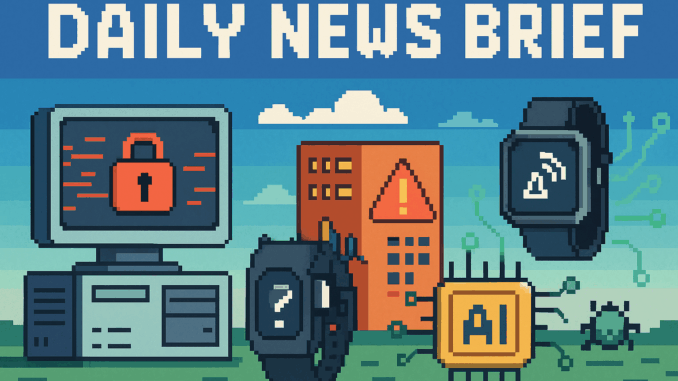
NHS Recruitment Firm’s Security Snafu Exposes Sensitive Data
Source: TechRadar
Security flaws in outdated software at a UK-based NHS recruitment firm mean systems were left dangerously open to exploitation. Researchers identified exposed API endpoints that could allow unauthorized access to sensitive data, including passport scans and right-to-work documents. In response, the company has launched an emergency audit and informed the Information Commissioner’s Office. It’s a stark reminder that, much like stumbling across an unsecured BBS back in the day, digital carelessness can have far-reaching consequences—in this case, sensitive biometrics rather than ASCII art.
Google’s Cloudy Day Leaves Users in the Dark
Source: TechRadar
Google Cloud’s global outage caused a ripple of disruption, bringing Workspace apps like Gmail and Drive to a screeching halt for four hours. The snafu was down to a “cascading DNS misconfiguration,” leaving many to pull out the backup drives and knuckle down offline. In London, fintech firms reported hiccups in transactions, spotlighting just how entangled we are with cloud infrastructure. For some, it felt like a step back to the quaint times of dusty PST files and the IPX/SPX days.
Hacked Smartwatches: Your Wrist is a Spy Gadget
Source: TechRadar
In a plot twist more James Bond than everyday tech, smartwatches now pose a new threat. Researchers demonstrated how compromised firmware in these wearables could exploit ultrasonic frequencies to pinch data from air-gapped systems. Vibration sensors, it seems, offer a stealthy data exfiltration pathway, with tests successfully conducted against industrial systems in Bristol and Manchester. Once fancy digital diaries, devices on our wrists now flirt with espionage.
Browsers with Brains: AI Takes the Wheel
Source: TechRadar
Imagine typing a question directly into your browser’s address bar and receiving answers without detouring through search engines. Enter the new Chromium-based AI browser that seamlessly integrates language models into your browsing habits. While early adopters find fewer phishing attempts, the trade-off is higher energy use. If you remember Telnet’s command lines with a certain nostalgia, our modern quest for information now involves vectors and tokens, not just a casual gopher across the web.
Cryptojacking Caper: DeepSeek Installers Infest Developers
Source: TechRadar
DeepSeek AI’s seemingly benign client installers have been found to house cryptojacking malware, capable of surreptitiously mining Monero via GitHub and PyPI repositories. This digital heist is mainly aimed at UK developers working on the hallowed yet aging systems of yesteryear. For those who remember bootable games that erased your trusty HDD, it’s a reminiscent yet unwelcome nod to past tactics cleverly reimagined for the digital age.
This Day in Tech History: IBM’s Humble Beginnings
On this day in 1911, the Computing-Tabulating-Recording Company (CTR) came into being—a modest New York venture that would grow into IBM, one of the world’s tech behemoths. From punch card tabulators to time clocks, CTR’s early innings promised nothing of the massive innovation wave to follow. But whether you’ve waited at bank queues, gazed at lunar landings, or typed on boxy PCs at work, IBM’s legacy touched countless facets of life. As AI startups now chase IBM’s shadow, it’s a timely reminder: even tech royalty began by simply counting and recording.

Leave a Reply